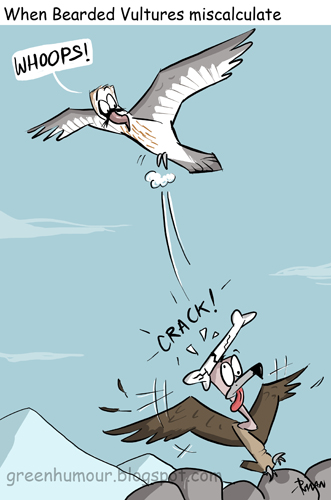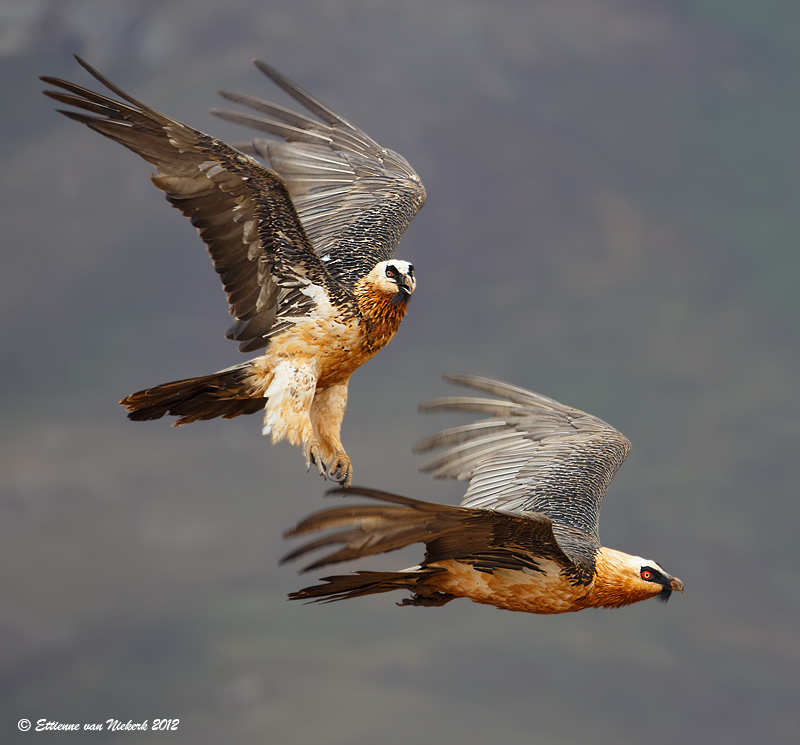Bone Dropping Bearded Vultures
Biology 342 Fall 2012
Ivy Hellickson
Ontogeny
Bone breaking requires practice. Immature Bearded Vultures play with one another, dropping and catching bones in midair [8]!
Play in animals may just look like all fun and games, but it's actually an important part of the youngster's development! Not only does it teach important lifetime skills like pouncing or chasing, but it also plays a role in sociality. For many species, social skills are just as important as hunting skills. One other advantage of play is that it's fun! Even if play can be energetically costly, immature animals often have that energy to use up and, just like in human children, play may satisfy some developmental need that a yound animal may have. However, in reality the precise function of play is not completely understood. In the case of immature Bearded Vultures however, play does seem to be relevant to adult bone breaking behaviors.
It can be inferred that because this skill requires such practice, that the young birds must learn how to carry out the behavior.The bone needs to be dropped from the right distance, and needs to hit the right target in order for it to break. Perfecting this skill requires the juvenile to learn how to aim and judge height. It is documented that the juveniles of a closely related species, the Egyptian Vulture, are taught how to break ostrich eggs with stone and eat tortoises by other individuals [11]. This feeding behavior is similar to the mechanism of bone-dropping, so it can be hypothesized that the bone dropping behavior also has a learning component.


Figure 6. A cartoon of a Bearded Vulture accidentally dropping it's meal on a Griffon Vulture. Calculation takes practice [18]! Figure 7. Two Bearded Vultures interacting during flight [23].
Bearded vultures mature at approximately six years of age. Young chicks need red meat to thrive, and as the juvenile becomes and adult, the amount of bone marrow in the diet increases [7]. The chicks’ digestive systems are likely unable to digest or accommodate bone pieces. As they age, they become more physically able to fulfill their bone diet niche. It is probable that switching to a diet of bone and marrow is instinctual, but the action of dropping the bones to gain maximum access to nutrition is most likely learned.

Figure 8. Two Bearded Vulture chicks [19].